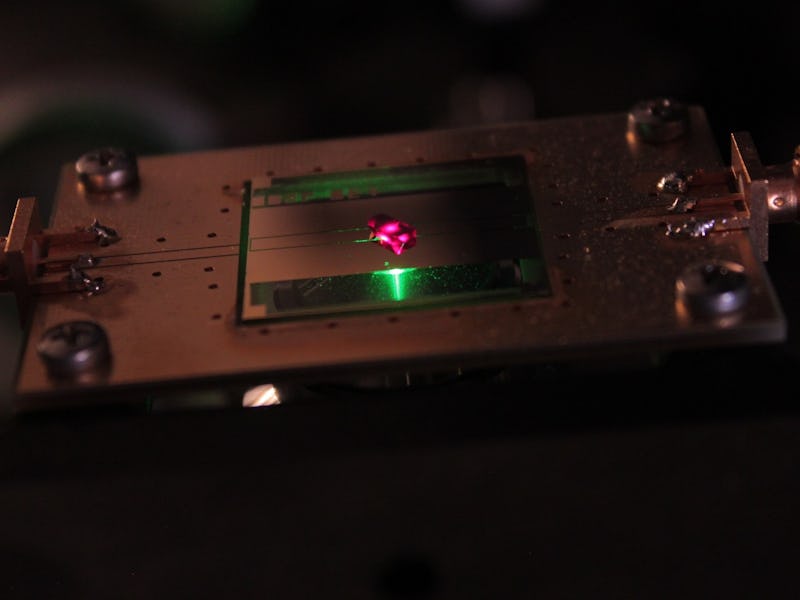What Are These "Time Crystals" We Keep Hearing About?
Yes they exist. No you can't buy them from a mysterious shopkeeper.

This past week, science and technology blogs devoted a few hours and in some cases a whole day to reporting on time crystals, a material that physicists are calling a new state of matter. There were Doctor Who and Power Rangers references to be made, as well as speculation about the possibility of perpetual motion machines. And while time crystals are quite cool, the reality is that this is a wonky, highly technical topic, one that even the experts aren’t sure the public can fully grasp.
Now that the dust has settled on this topic, here are some of the ways writers described time crystals this week in the science press:
“Time crystals are hypothetical structures that pulse without requiring any energy — like a ticking clock that never needs winding,” writes Elizabeth Gibney in Nature News & Comment.
“[Time crystals are] a new and strange state of matter that was theorized, disproved, revamped and finally created in just five years since it was first predicted in 2012,” writes Rodrigo Ledesma-Aguilar for Newsweek.
Daniela Hernandez at the Wall Street Journal writes that time crystals are “the long-theorized quantum systems that spin at their own pace independent of their environment, seemingly breaking the rules of normal timekeeping.”
These news stories are based on a set of papers published in the journal Nature. One comes from a team at Harvard, and the other from a team at University of Maryland. The teams used different methods, but arrived at the same general conclusion: Time crystals can totally exist.
But what are they?
We’re most familiar with crystals that are in the solid state: Their atoms arrange themselves in space in a very particular way. Time crystals, on the other hand, arrange their atoms in time. Both types of crystal exhibit the concept known as “symmetry breaking,” which describes the phenomenon in which a substance becomes less symmetrical when it crystallizes.
MIT physicist and Nobel laureate Frank Wilczek first proposed this theory in 2012, applying this spatial property of symmetry breaking to time. What this means is that an environmental stimulus will not necessarily make a crystal respond in a way that follows normal rules of physics.
This property became clear in these recent experiments. The Harvard team performed their experiment with a diamond whose lattice-work, which is normally composed entirely of carbon atoms, contained a million nitrogen atoms. These tiny atoms, smaller than carbon, created gaps. They created so many gaps, in fact, that the diamond appeared black. The physicists then bombarded the diamond with pulsing microwave radiation.
What they observed was the nitrogen atoms flipping back and forth, but not at the same rate as the microwave pulses. In other words, they observed the crystal breaking symmetry in time, pulsing at its own rate in response to a stimulus. You can see the crystal glowing red in the top photo of this story.
The University of Maryland team’s experiment followed a similar concept: They shined a pulsing laser on a line of 10 ytterbium atoms to induce partial spin. These atoms, like the nitrogen, flipped at a rate that didn’t match their stimulus. They flipped at half the speed of the laser pulse.
Boom. Time crystals. It might not sound sexy, but for physicists, it’s an exciting discovery.
And while both teams observed time crystals, they also illustrate the same unfortunate reality of time crystals: At this point, they only exist in a lab. They can’t power your car or charge your phone, and they aren’t yet ready for applications such as quantum computing. Scientists seem to agree that this new state of matter is exciting, but mostly because it exhibits really interesting quantum mechanics concepts that had only been theorized about before this.
“It’s not a perpetual motion machine,” Jiehang Zhang, a member of the University of Maryland team, tells Gizmodo. “We’re driving it!”